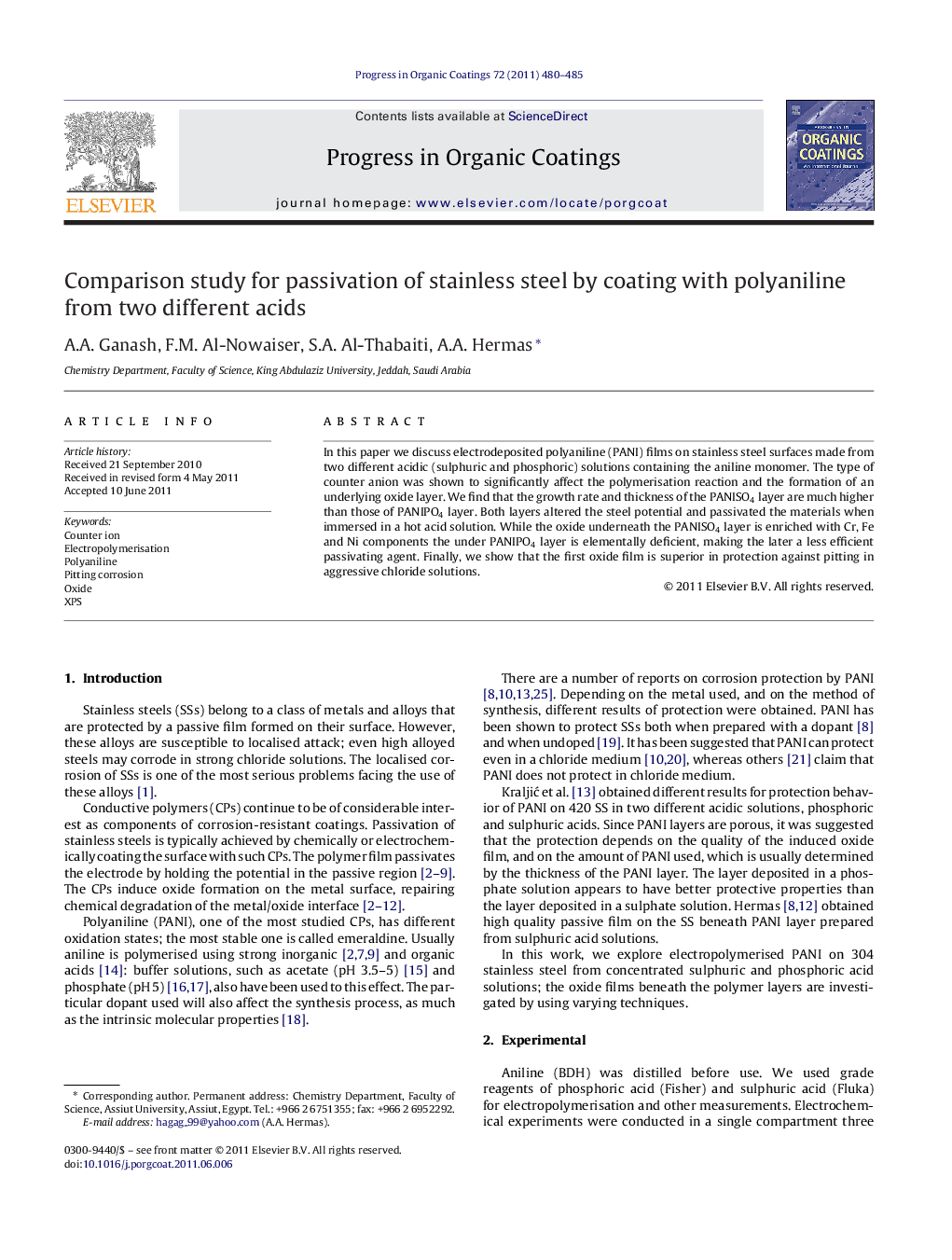| Article ID | Journal | Published Year | Pages | File Type |
|---|---|---|---|---|
| 692848 | Progress in Organic Coatings | 2011 | 6 Pages |
In this paper we discuss electrodeposited polyaniline (PANI) films on stainless steel surfaces made from two different acidic (sulphuric and phosphoric) solutions containing the aniline monomer. The type of counter anion was shown to significantly affect the polymerisation reaction and the formation of an underlying oxide layer. We find that the growth rate and thickness of the PANISO4 layer are much higher than those of PANIPO4 layer. Both layers altered the steel potential and passivated the materials when immersed in a hot acid solution. While the oxide underneath the PANISO4 layer is enriched with Cr, Fe and Ni components the under PANIPO4 layer is elementally deficient, making the later a less efficient passivating agent. Finally, we show that the first oxide film is superior in protection against pitting in aggressive chloride solutions.
• The electrodeposition of PANI on the stainless steel surface from sulphuric acid and phosphoric acid solutions are different. • The coated layer of PANIPO4 protected the stainless steel from corrosion; however it is a weak efficient passivating agent. • The coated layer of PANISO4 protected the stainless steel from corrosion and the underlying oxide is enriched with Cr, Fe and Ni components. • The type of counter ion can strongly influence the redox process between the polymer and the metal surface.
